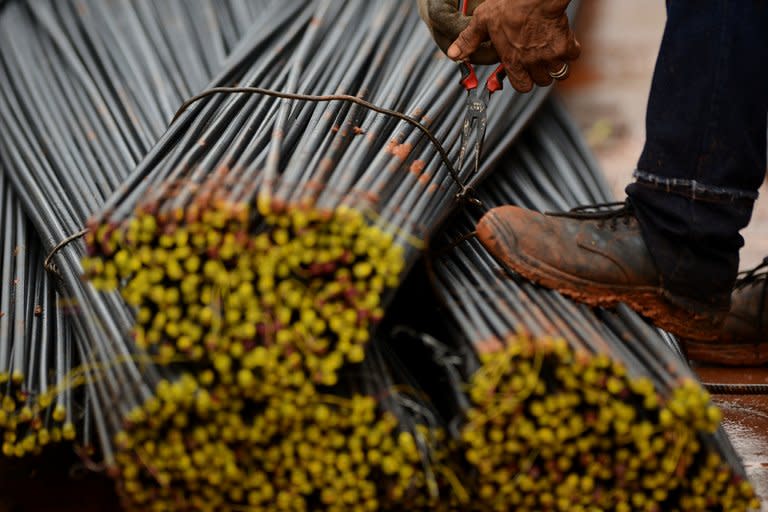Philippines posts 7.8% growth in first quarter
The Philippines posted surprisingly strong growth of 7.8 percent in the first quarter of the year, official data showed Thursday, cementing its status as one of Asia's most dynamic economies. The expansion was the fastest since President Benigno Aquino came to power in 2010, and boosted hopes that one of the region's perennial underachievers had entered a sustained phase of rapid growth. "We may now be moving along a new growth trajectory. Business confidence and consumer optimism fuelled this growth," Socioeconomic Planning Secretary Arsenio Balisacan told reporters. The growth rate for the Philippines from January to March was the fastest in Asia, surpassing even regional powerhouse China, which grew by 7.7 percent in the same period. The Philippine economy had for decades stagnated in comparison with others in Asia, and roughly a quarter of the country's 100 million people live on the equivalent of 60 cents a day or less. Aquino pledged after winning a landslide election victory three years ago to transform the country's economy. Tackling government corruption, boosting infrastructure spending and widening the social safety net were key planks of his agenda. Balisacan said the first-quarter results showed the reform plans were working, with impressive growth seen across all key sectors of the economy. He said average economic growth of 4.6 percent over the past decade had been largely driven by consumption, fuelled by the vast sums of money sent home by the nine million Filipinos working overseas. In contrast, Balisacan highlighted that the industrial sector grew by 10.9 percent in the first quarter of this year, with local manufacturing expanding by 9.7 percent. He also pointed out that the services sector -- which includes the increasingly important business process outsourcing industry that employs more than 600,000 Filipinos -- grew by 7.0 percent. Balisacan conceded that heavy campaign spending by politicians ahead of mid-term elections this month helped boost the economy, but said it was not a main driver. The Philippine economy grew by 8.9 percent in the second quarter of 2010, marking the final few months before the presidential elections when campaign spending was far heavier. Balisacan said the government was maintaining its target of 6.0-7.0-percent growth for this year. But following the first-quarter results, which exceeded analysts' expectations, he said the government was more confident of achieving its target of 7.0-8.0 percent growth rates by the end of Aquino's term in 2016. Finance Secretary Cesar Purisima also said the results showed the Philippines could expect sustained growth. "The Philippines now looks upon an open sky of possibility, as we continue to free ourselves from the limiting mentalities that have held us back in the past," he said. HSBC economist Trinh Nguyen described the growth as "impressive". But she cautioned that government spending had been vital to the growth, and this might not be sustainable amid continued low government revenues. She also pointed out that despite consistent fast growth in the Philippines -- the economy grew by 7.1 percent in the final three months of 2012 and 6.8 percent for the year -- the unemployment problem had not improved. The country's unemployment rate rose to 7.1 in January, from 6.8 percent at the end of 2012, according to official data. Economists say one of the worst traits of the Philippine economy is a huge rich-poor divide, with a remarkably few number of families and companies swallowing up most of the benefits of growth.




